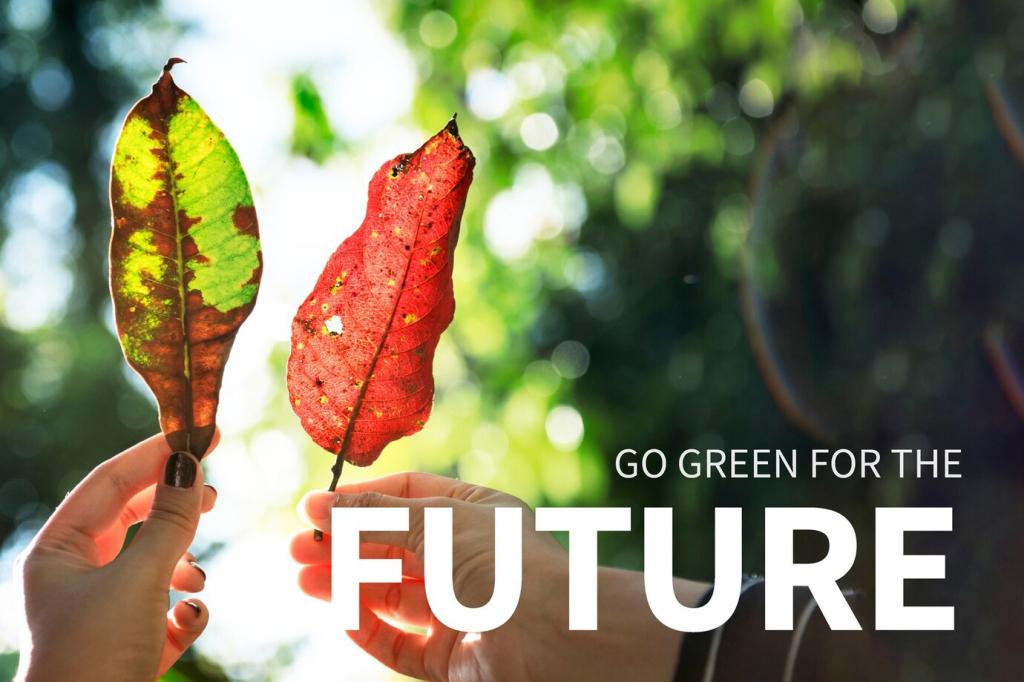Green Infrastructure Solutions for Urban Sustainability
Green infrastructure solutions are reshaping the way cities address challenges like climate change, population growth, and resource management. By integrating natural elements and ecological processes into urban environments, these strategies offer sustainable alternatives to conventional infrastructure. They enhance resilience, promote healthy living, and support biodiversity, transforming cities into more vibrant, adaptive, and environmentally friendly spaces.

Integrating Nature into Urban Design

Urban Forests and Tree Canopies
Urban forests and expansive tree canopies are essential components of green infrastructure that bring a myriad of benefits to urban environments. Trees act as natural air filters by absorbing pollutants and sequestering carbon dioxide, thereby helping mitigate the effects of air pollution and climate change. Moreover, the shade provided by dense tree canopies reduces urban heat islands, creating cooler microclimates that make city living more comfortable. Strategically planting and maintaining urban forests also encourages biodiversity by creating habitats for birds, insects, and other wildlife, enriching the ecological value of city spaces.

Green Roofs and Living Walls
Green roofs and living walls are innovative techniques that introduce vegetation onto building exteriors and rooftops. These green solutions help to insulate buildings, leading to reduced energy consumption by keeping interiors cooler in the summer and warmer in the winter. Additionally, green roofs and walls absorb rainwater, which decreases runoff and alleviates stress on urban drainage systems. Beyond the practical benefits, these installations foster a sense of well-being, providing residents with visual and physical contact with greenery even in the densest of urban settings.

Community Gardens and Urban Agriculture
Community gardens and urban agriculture are cornerstones of integrating nature with urban living. These initiatives transform vacant lots and underutilized land into productive green spaces that supply fresh, local food to city residents. Not only do they enhance food security and reduce the need for long-distance transport, but they also foster community engagement and social cohesion. Furthermore, urban agriculture projects provide educational opportunities about sustainable practices and environmental stewardship, promoting a culture of sustainability among urban dwellers.
Water Management and Resilience
01
Permeable Surfaces and Bioswales
Permeable surfaces, such as porous pavements and pavers, enable rainwater to infiltrate the ground, rather than running off into storm drains. This helps recharge groundwater supplies and alleviates pressure on municipal drainage systems during heavy rainfall. Similarly, bioswales—vegetated channels designed to slow and filter stormwater—trap pollutants and sediments, thus improving water quality before it reaches waterways. These landscape elements not only enhance water resilience but also contribute to the aesthetic and ecological value of urban spaces.
02
Rain Gardens and Constructed Wetlands
Rain gardens and constructed wetlands are nature-inspired solutions that capture, store, and treat stormwater runoff. Planted with native vegetation, rain gardens intercept water from roofs, streets, and parking lots, enabling it to filter through the soil and nourish plants, all while removing contaminants. Constructed wetlands replicate natural marshes, providing habitat for diverse species and filtering pollutants through complex biological and chemical processes. These systems help reduce urban flooding, enhance biodiversity, and create tranquil green spaces within urban environments.
03
Blue-Green Corridors
Blue-green corridors integrate waterways, parks, and green spaces into cohesive networks that support both people and wildlife. By reconnecting rivers, streams, and natural habitats fragmented by urban development, these corridors improve water flow, reduce flood risks, and support migration routes for flora and fauna. They also serve as recreational spaces and natural cooling areas for residents, further demonstrating the multifunctional benefits of comprehensive water-based green infrastructure in cities.

Pollinator Pathways and Native Plantings
The creation of pollinator pathways and the strategic use of native plants are vital for maintaining strong populations of bees, butterflies, and other pollinators within urban areas. By incorporating meadows, gardens, and green strips rich in native flowers, cities provide critical food sources and nesting habitats. This not only supports pollinator health but also enhances the productivity of urban food gardens and contributes to the overall health of ecosystems by promoting genetic diversity and plant reproduction.
Urban Wildlife Habitats
Urban wildlife habitats, such as birdhouses, bat boxes, and pond ecosystems, create refuge for species that might otherwise be displaced by development. Designing parks, rooftops, and even roadside verges with wildlife in mind can attract a variety of insects, birds, and small mammals, increasing urban biodiversity. These habitats offer educational opportunities for residents to learn about native species and foster a sense of connection to the natural world, all while balancing development with the needs of wildlife.
Ecological Restoration Projects
Ecological restoration projects in urban areas aim to revive degraded environments and reintegrate natural processes into city landscapes. These initiatives may involve removing invasive species, replanting native vegetation, or restoring wetlands and riverbanks. By reestablishing natural habitats and ecological functions, restoration efforts improve air and water quality, reduce erosion, and strengthen the resilience of urban ecosystems to environmental stresses, ultimately contributing to a healthier urban environment for all.
